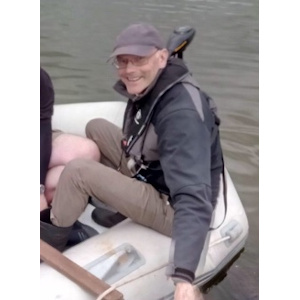Queen's University, Belfast

| Current Position | Geologist |
| Telephone | +44 (0) 2890973407 |
| a.ruffell@qub.ac.uk | |
| Departments | School of Biological Sciences |
| ECR | No |
| Methods I Use | Geophysics |
| Profiles |
Key Research Interests
- Forensic Geology
- Geophysics
- Palaeoclimate Change
Recent Key Papers
- Ruffell, A., Dal Corso, J. & Benton, M. 2018. Triassic extinctions and explosions. Geoscientist 28 (8), 10-15 (2018) https://doi.org/10.1144/geosci2018-007
- Baranyi, V., Miller, C., Ruffell, A., Hounslow, M.W. & Kurschner, W.M. 2018. A continental record of the Carnian Pluvial Episode (CPE) from the Mercia Mudstone Group (UK): palynology and climatic implications. Journal of the Geological Society, London, 255, in press. https://doi.org/10.1144/jgs2017-143
- Ruffell, A., Hunt, C.O., Grima, R., McLaughlin, R., Malone, C., Schembri, P. French, C. & Stoddart, F. 2018. Water and Cosmology in the Prehistoric Maltese World: Fault Control on the Hydrogeology of Ġgantija, Gozo (Maltese Islands). Journal of Archaeological Science, Reports, 20, 183-191. https://doi.org/10.1016/j.jasrep.2018.05.002
- Ruffell, A. & Barry, L. 2018. The Desktop Study, an essential element of Geoforensics search: homicide and environmental cases (West Belfast, N.Ireland, UK). In: Fitzpatrick, R. (Ed.), Soil and Geological Forensic Science. Geological Society, London, Special Publication, 401, in press.
- Ruffell, A. & Donnelly, L.J. 2018. Forensic geophysics and the search of building interiors, peat bogs and water. In: Groen, M. & Barone, P-M. (Eds.) European Meeting of Forensic Archaeologists, Special Volume. Multidisciplinary Approaches to Forensic Archaeology. Springer Chapter 4: DOI 10.1007/978-3-319-94397-8_4
Summary Title of Current Studentships
- Canine reactions to epilepsy
- Dinosaur palaeopathology
- The Disappeared of Ireland’s Trouble
- QUADRAT DTP student, Amy Lally: Source-to-sink dynamics and palaeo-environment reconstruction from a dynamically evolving glacial foreland

 PURE
PURE



















































